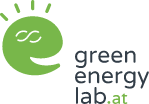New projects at Green Energy Lab
The Green Energy Lab, Austria's largest innovation laboratory for a sustainable energy future, continues to grow. Thus, the project portfolio of the research initiative now includes 48 projects, which are funded by the showcase region of energy and other funding models and have a total volume of €150 million.

26 June 2023 – The steady growth of the project portfolio is currently being spurred on by the numerous new projects in the 4th “Vorzeigeregion Energie” call for proposals. Six of these projects can already be found on the Green Energy Lab project page. We are pleased to present you our new projects.
The largest project portfolio for Austria’s energy future
With a portfolio of meanwhile 48 projects, the Green Energy Lab creates a sustainable contribution to the consolidation of Austria’s leadership in the field of renewable energy. Since the energy transition requires a fusion of different technologies and sectors, the Innovation Lab’s project portfolio is deliberately diverse. Five thematic clusters were therefore introduced, in which the 48 research projects are engaged. The interplay of these clusters is crucial to the path to a green energy future. These are “Energy Communities and Grids,” “Storage Technologies and Flexibility,” “Integrated Mobility Solutions,” “Integrated Building Solutions,” and “Green Heating and Cooling.”
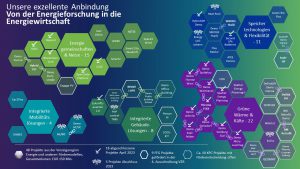
Green (district) heating and cooling
A central element of the heat transition in Austria is the pipeline-based heat supply. With around 5,600 kilometers of pipelines, district and local heating networks already supply more than one million households, which means that around a quarter of Austrian households are connected to this type of heat supply. In addition to climate-neutral biomass, fossil fuels such as natural gas and heating oil still serve as energy sources for the most part. The decarbonization of grid-connected heating systems is therefore a central element of the heat transition, as is increasing their efficiency.
Biomass-based district heating systems play a central role in sustainable heat supply in Austria and comprise around 2,400 plants in operation. Currently, many of these heating networks are in greater need of retrofitting and modernization in order to meet future technical, economic and regulatory challenges as well as sustainable and targeted expansion. In the BM Retrofit project, innovative technical concepts (e.g. flue gas condensation, heat pumps, storage technologies) are developed accordingly and optimized for efficient system integration. This will ensure that innovative measures are further improved and integrated into the heating networks, leading to more sustainable and economical operation combined with reduced resource consumption and emissions savings.
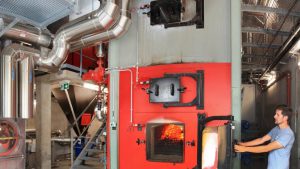
Risk minimization for investments in urban district heating networks
The structures of urban heating networks differ from those in rural areas, where biomass-based local heating networks usually dominate. The decarbonization of urban district heating involves major investment risks for operators. The challenges associated with the integration of alternative heat sources lie in particular in the optimization of the building stock in terms of return temperatures and flexibilities, in network hydraulics, bidirectional operation, the integration of seasonal storage, and the involvement of consumers and the development of business models. The minimization of the associated risks is the focus of DeRiskDH.The project develops and demonstrates innovative solutions on a technological and strategic level as well as innovative business models for district heating operators and building owners to overcome the technical challenges and minimize the investment risk in alternative heat sources. The concrete solutions will be demonstrated and tested in the cities of Vienna, Graz, Linz, Salzburg and Klagenfurt.
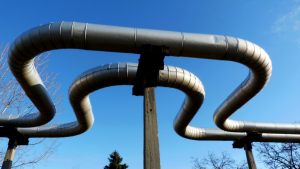
Digitization as the key to increasing efficiency
Digitization also represents a central pillar of the decarbonization of grid-bound heat. The DOPPLER project therefore aims to develop a digital optimization platform for district heating systems. The efficient and low-emission operation of such plants requires intelligent interaction between energy supply, storage and distribution. Currently, most district heating systems are controlled according to the current power demand, but this sometimes leads to unfavorable operating conditions with low efficiencies and high emission levels. The aim of the project is therefore to implement decentralized optimization measures based on demand response. A system-wide platform for district heating planning and operation that integrates all components such as generation, distribution and consumption is being developed. A strong focus is on the integration of end customers. With the help of the measures set in DOPPLER, the overall efficiency of district heating systems is increased and thus CO₂ – emissions are reduced.

Generating green solar power together
For a sustainable energy future, the electricity sector must not be ignored. In order to achieve the European climate targets, the Renewable Energy Expansion Act was introduced in Austria, which creates essential framework conditions for the decarbonization of the energy sector. A key point is the supply of electricity from 100 percent renewable sources by 2030. To achieve this, photovoltaics are expected to make an additional contribution of 11 TWh per year. The optimized integration of photovoltaic systems into the overall energy system is essential for this. Engage PV therefore aims at the participatory development and demonstration of integrated solutions in different, interdisciplinary networked innovation fields using open innovation approaches. The intention is, based on the fundamental requirements (technical, social, economic, regulatory/legal, forecasting), to develop appropriate individual solutions in an open innovation process, which are subsequently networked by an interdisciplinary team of experts into overall solutions and demonstrated as such.
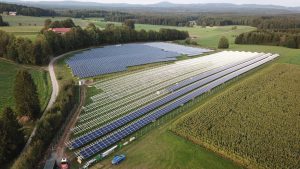
Sustainable wellness vacation
The Austrian thermal landscape is one of the most important tourist regions in Europe. In addition to the high number of visitors, the thermal baths also have a high energy consumption. The problem is that the energy required currently still comes to a large extent from fossil sources such as gas. Fortunately, there is also a great potential for the use of deep hydrothermal geothermal energy (depth > 400m) in the thermal landscape, which must be exploited. The decarbonization of thermal baths can therefore make a valuable contribution to the energy transition. GEO.MAT is pursuing the goal of using hydrothermal wastewater to generate energy by means of heat pumps instead of flushing it down the drain. IIn the project, different heat pump technologies used to upgrade geothermal wastewater (30°C) and to heat the pools of thermal spas are coupled with innovative control measures for demand-side management (peak shaving, load shifting) and supply-side management (load-point optimized use), and energetically optimized piping and heat exchangers are developed taking into account the low target temperatures for pool heating for Austrian thermal spas.
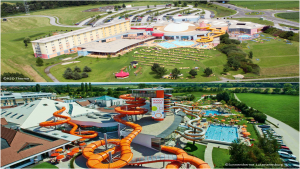
The sustainable building renovation of the future
The building sector represents another pillar of the energy transition. Currently, about 35% of buildings in the EU are over 50 years old and almost 75% of the building stock is energy inefficient. At the same time, only about 1% of the building stock is renovated each year. The RENVELOPE project therefore aims to develop a cost-effective, complete circular solution for the modernization of existing buildings by conditioning buildings from an external envelope, thus allowing minimally invasive refurbishment. By combining serial, multifunctional CO₂-neutral building renovation with integrated, intelligently controlled building technology, the project aims to make the building sector an essential pillar for the energy system of the future.
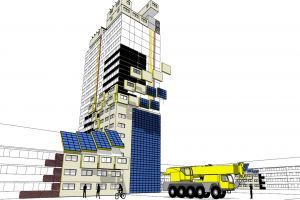
Here you will find a continuously updated overview of all Green Energy Lab projects.
